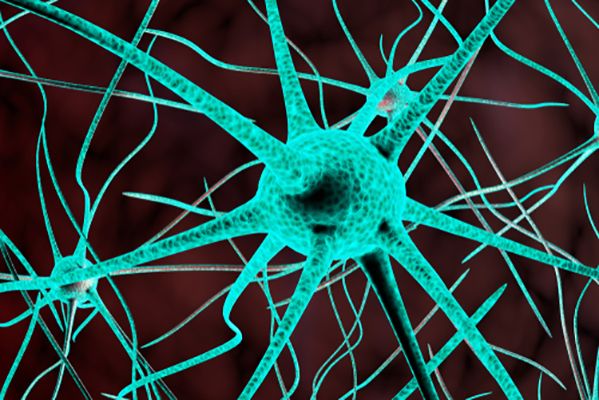Welcome back to the Healing Pain Podcast with Dr. Melissa Day
Thanks for joining me for another episode of the show. We are talking about mindfulness and cognitive-based treatments for chronic pain management. If you’ve been following along with the show, you know that we talk a lot about mindfulness-based treatments for pain, as well as the various types of cognitive-behavioral approaches including Cognitive Behavioral Therapy, Acceptance And Commitment Therapy, mindfulness-based stress reduction and even pain neuroscience education. We have yet to explore the mechanisms as to why these approaches work or if there’s one that works better for certain populations. Here to speak to us about the what, why and how of mindfulness-based chronic pain management techniques is Clinical Psychologist Dr. Melissa Day. Melissa completed her PhD in Clinical Psychology at the University of Alabama. She works as an award-winning pain researcher in Australia. Her research focuses on randomized trials to evaluate the efficacy and mechanisms of mindfulness and cognitive-behavioral interventions for the treatment of many chronic pain conditions. She also published a book titled Mindfulness-Based Cognitive Therapy for Chronic Pain: A Clinical Manual, and Guide. You can find that on Amazon.
In this episode, you’ll learn the rationale for applying mindfulness-based approaches for chronic pain management. How mindfulness-based approaches are unique from Cognitive Behavioral Therapy. The evidence supporting mindfulness-based approaches for chronic pain management. Who might mindfulness-based treatment for chronic pain best be suited for? I know you’re going to enjoy this episode because we get down into the weeds as to why mindfulness and cognitive-based treatments work for people with chronic pain or how they can help people with chronic pain cope better and more effectively. Let’s begin and let’s meet Dr. Melissa Day.
—
Watch the episode here:
Subscribe: iTunes | Android | RSS
The “What, Why and How” Of Mindfulness-Based Chronic Pain Management With Dr. Melissa Day
Melissa, welcome to the show. Thanks for joining us.
It’s great to be here.
I came across your work. I was out there researching a little bit about mindfulness and how mindfulness was related to chronic pain, specifically mindfulness meditation and then mindfulness-based stress reduction. That always leads to CBT and it popped up a great article that you wrote in June 2019 Journal of Pain called Moderators of Mindfulness Meditation, Cognitive Therapy, and Mindfulness-Based Cognitive Therapy for Chronic Low Back Pain. In that, you start to slowly tweeze apart all these different types of psychological interventions, the mechanisms and how they can be used by practitioners. When might they be more appropriate? I’m excited that you’re here to talk to us about all this. A good place to start, when I think back to history in this show, we’ve talked a lot about mindfulness and how it relates to pain. It’s a topic people are interested in. Can you tell us why a practitioner or a patient even should be or would be interested in mindfulness-based interventions for chronic pain?
For pain specifically, it’s a multifaceted answer to that. If we look at it from a fundamental level of pain, we don’t know we’re in pain until that signal reaches the brain and is processed in the brain. Even though there is some peripheral processing, most of the processing of pain happens above the spinal cord level in the brain. If we put people who are in pain in an MRI scanner, it’s not the smartest sensory cortex that lights up, this specific area of your pain. These whole areas of the brain are lighting up that are interconnected. If we look at the amygdala, the emotion center, is lighting up. It’s rare for you to stub your toe and not be irritated at that. Typically, you have an emotional reaction to pain. We get the amygdala lighting up. Maybe the thoughts far up, you say some choice words in response to stubbing your toe. We’ve got the prefrontal cortex involved. In chronic pain, your brain is constantly processing pain. All these pathways and interconnections in these other areas of the brain get strengthened. What that means is the points of intervention for treating pain goes beyond the sensory aspect of it because we can target any one of those neurological links. That shifts the processing of pain in the brain and it shifts our experience of pain.
We can target those cognitions, we can target those anticipatory responses. We can target the emotional responses. Mindfulness does that. Mindfulness meditation targets each one of those links. With meditation, it’s not fluff. What we’re doing is we are retraining the brain and we’re retraining those pathways to process the pain in a different way. Instead of the alarm bells going off in the brain, which ramps up pain processing, we can quiet down those links. It doesn’t cure pain. We don’t have a cure for chronic pain, but it does change the experience of pain and change the impact of pain.
It’s a great way to start. It’s exciting for both practitioners as well as people who have pain, who are looking for solutions because there’s clinical research as well as function MRIs. It’s pointing towards mindfulness as simple and effective ways that are accessible for patients, which is important. We want things to be accessible. In the world of psychology, which you’re a part of, there was that first wave of psychological therapies, if you will, a more behavioral, basic. The second wave is more cognitive. Finally, we’re in the potatoes of the third wave, which is more of the mindfulness-based approaches, which you’re researching and looking deep into. A more research level, how did you become interested in the more mindfulness-based aspects of chronic pain?
From a young age, I trained to be a professional tennis player. As I was training for tennis, a big part of that is training your mind as well. I was practicing yoga and meditation back then. Tennis is what took me to the US from Australia. Unfortunately, I got injured. It was pain that was the end of that career. Originally I thought, “Perhaps I can beef up my meditation and maybe I can learn to do that so I can keep playing tennis.” It didn’t work that way, but it did open up this doorway to non-pharmacological pain management. I was a nerd at the time as well. Certainly, I was happy to study this to the nth degree and here we are. The big thing is I’m a clinician as well. I work with patients and you can see the difference it makes. Typically, we do eight-week programs. You can see the shifts in the way people walk, their faces, their energy, even their eyes. You can see the difference it makes. That’s reinforcing to know that the research that you’re doing has a clinical impact. You could then see it with the patients you’re working with.
Tell us the difference between traditional Cognitive Behavioral Therapy and a mindfulness-based approach to pain. Maybe we should talk about it from a psychological intervention. Mindfulness meditation, you can go to a mindfulness center where you may be working with someone who’s certified in mindfulness. In your case, we’re talking about licensed professionals. You have a license to evaluate and treat patients who are working with pain. What’s the difference between the two different types of approaches and their delivery in clinical practice?
That’s an important point because there are many apps out there and there’s no problem with those apps. It’s different from receiving a clinical intervention from a trained professional where you’re learning how to. You’re not just learning techniques, you’re learning techniques to apply them specifically for pain management. That’s a big difference right there. Coming back to your question about Cognitive Behavioral Therapy, CBT is the gold standard. Research has been accumulating on this approach since the ’80s. Massive amount of efficacy. What that treatment is targeted to do in brief is that we know that unhelpful cognitions and unhelpful behaviors predict worse outcomes with chronic pain over time.
We’re looking at cognitions like pain catastrophizing, which is one of the most robust predictors. Pain catastrophizing is a negative mindset about actual or anticipated pain. With Cognitive Behavioral Therapy, a key technique is cognitive restructuring and that aims to change those cognitions. It’s explicitly designed to change the cognitions. The behavioral techniques in CBT are also explicitly designed to change behaviors. We know that sedentary behavior, inactivity, previously we used to say, “Rest when you have low back pain.” We know that’s one of the worst things that we can do with low back pain. CBT target is changing those behaviors.

Mindfulness-based approaches, on the other hand, come at it from a different perspective. While CBT is quite change-focused, mindfulness-based approaches are focused on not changing the experience per se, whether that be pain or cognitions, but shifting the way that we relate to those experiences. Shifting the way we respond to those experiences. In that way, we’re learning that we cannot change pain. If we could change pain, we could cure it. We wouldn’t have any need for psychological interventions. What we’re learning here is that instead of seeing the pain and go, “I hate it, I don’t like it. This is ruining my life.” We can see all that and we can mindfully notice that, observe that. Instead of adding that extra baggage onto the pain with meditation, we’re learning to let go of that extra baggage, which we know loads up the pain. I find it interesting because even though CBT and mindfulness come at it from different angles, I feel like they’re different pathways to perhaps ultimately the same destination.
For people who read this, they’re familiar with the term mindfulness, they’re familiar with the term Cognitive Behavioral Therapy. I’ve interviewed a lot of people in the world of Acceptance and Commitment Therapy, also known as ACT. In your paper, you started looking into Mindfulness-Based Cognitive Therapy. There’s four right there. There’s mindfulness, CBT, ACT and MBCT, which you’ve talked about here. You talk about mindfulness and you’ve talked about CBT. If you can touch on the ACT and mindfulness-based CBT and maybe a difference and a similarity to those so people can have some context what we’re about to talk about concerning the research.
I’ll start with Mindfulness-Based Cognitive Therapy first. It’s related to what I was talking about because Mindfulness-Based Cognitive Therapy essentially combines elements of CBT with mindfulness aspects but without the change focus. An MBCT, Mindfulness-Based Space Cognitive Therapy, what we’re looking at is using the Cognitive-Behavioral techniques to enhance awareness. Your basic scientific principle is observing something typically changes something. When we can have these cognitive-behavioral techniques to enhance awareness of thought patterns. A typical Becky and cognitive patterns of fortune telling, mind reading, black and white thinking, over-generalization, all these patterns that get in our way. When we can use the CBT techniques to enhance awareness of that, we then use the meditation to apply this nonjudgmental attitude to be able to let those go, so that they don’t get stuck in our heads much. Same with the behavioral piece of MBCT, enhancing awareness of what are we doing in our days? How are we feeling at the time? Are those activities fulfilling our needs? Are they moving us in a direction that’s valued? If they’re not, how do we shift the balance there so that we can schedule in more nourishing activities?
Activities that top up our resources, energize us versus these depleting activities that most of us do on autopilot without even realizing it. In that way, MBCT brings in a combination of the two approaches, which I find works well. ACT on the other hand, Acceptance and Commitment Therapy, also has a building evidence-base and building efficacy for chronic pain. This is important because we need a menu of options for patients. Not everyone wants or responds well to mindfulness-based approaches. Not everyone wants to respond well to CBT. When we can have this menu of options that are evidence-based, shown to work by research, then we can give patients a treatment that hopefully is well-suited to optimize outcome then. This is important because ACT, Acceptance and Commitment Therapy, is based on a different theoretical model and rationale. Oftentimes, Acceptance and Commitment Therapy and mindfulness are lumped together, which is somewhat unfortunate because they are based on different theoretical models.
Acceptance and Commitment Therapy is based on relational frame theory and also the psychological flexibility model. There’s some overlap there. Your present moment-focused awareness and some mindfulness techniques sometimes are delivered in Acceptance and Commitment Therapy. It’s the theory on the line treatments that as a clinician guides you in what direction to take therapy. That is quite important. All of these treatments, I believe have a building evidence-based CBT, the gold standard. We need more options so that we can find the one treatment that works best for a given patient in front of us.
One of the things I loved about your research as you started and you have started to a great extent to look at who might do better with mindfulness meditation? Who might do better with CBT? Who might do better with Mindfulness-Based Cognitive Therapy? Can you explain to us what you’ve unearthed with some of that research concerning picking one of those out of the hat blindly versus saying, “I evaluated this patient and it looks like Mindfulness-Based Cognitive Therapy is best for this patient?”
That is where we’re moving. The first step is to show, “These treatments are effective, safe and beneficial.” I’m moving more towards questions of mechanisms, understanding how. I’m particularly interested in understanding for whom do we give these treatments. Oftentimes in the clinical setting, we’ve been touting evidence-based practice for quite some time. That’s like, “What works? What are patient preferences? What do I do?” Any number of things and then we put this on the patient. Unfortunately, that evidence that we’re using to guide evidence-based practice is based on group averages. Within those group averages, some individuals have responded exceptionally well, large effect size improvements. Some people might’ve got worse, might have said the same that we lump them together, we get this average.
My collaborators and I, our view is that evidence-based practice without knowing the moderators of treatment is perhaps not truly evidence-based practice. Maybe that treatment is not evidence-based for that individual. Typically, in the past when we’ve looked at moderators, it’s been this after the fact analysis. We run a randomized controlled trial, then we might look at sex, race or education level and see if they interact with treatment. We have come up with a theoretical model, the limit-activated enhanced model that we’re testing. That has a theoretical basis for why a certain individual should respond better to treatment X, Y or Z.
That’s important, particularly where precision medicine is a big topic area at the moment. What we’re doing here is the precision of medicine. What medicine in terms of psychological treatment here for a given individual and we all found that this model is tentative and preliminary, but where it’s the initial framework and we’re finding some evidence for it. This is particularly exciting because as a clinician, it can help you in that decision-making process to know which treatment for this person in front of me.

You’re the first person on this entire show over the course of a couple of years has mentioned precision medicine. I want to sit on that. It’s important because when you look at the research into chronic pain, like many of the non-communicable chronic diseases, responds to lifestyle. Under the umbrella of lifestyle, many different things can help lifestyle. You have practitioners and other people and a lot of times get emails from patients that are saying, “I’m changing my diet and I’m meditating, I’m doing this, I’m doing that.” They’re doing ten different things, which as a behavioral specialist you know that the behavior change, one, it takes that on and two, sustaining that can be challenging for people.
The idea of precision medicine is important than the idea that you’re boiling down or trying to figure out what the mechanisms and the moderators are. If all these different types of, let’s call them cognitive behavioral therapies as a blanket term, which may or may not fit for certain people. It’s important and we haven’t spoken about it on the show. Thanks for bringing that up. Concerning pain catastrophizing, which is probably one of the biggest moderators that we have looked at. People are familiar with Beth Darnall’s work from this show and my talks with her. Where does catastrophizing fit into these three different techniques that you’ve evaluated and researched?
Catastrophizing, I did a presentation on this. Catastrophizing is a biggie. What we are finding, we as in the field broadly and not just my research, but my clever, I’ve contributed. We’re finding that when evidence-based treatments target catastrophizing, that seems to be a pivotal driver of the positive outcomes that are observed. We have found that changes in pain catastrophizing underway improvement in not Cognitive Behavioral Therapy, which explicitly targets those cognitions. In my research, I’ve found that it is a mechanism of mindfulness-based meditation, Mindfulness-Based Cognitive Therapy and cognitive therapy. Other researchers have found that it’s a mechanism of pain education as well as CBT. It gets better. Even physical therapy works because it shifts pain catastrophizing. This is meta-mechanism, one ring to rule them all almost. It seems to be that if we can shift that, that’s when we start seeing success for patients.
This is interesting though because in the trial that I finished, lo and behold, several patients said to me, “I haven’t got any stress in my life.” I didn’t have any catastrophic cognitions.” I was like, “What? People without stress in their life?” I am living in Queensland with a lot of laid-back people here. It’s interesting though because if you’ve got a treatment that targets catastrophizing and you have an individual that is not catastrophizing, that treatment is not going to work.
This speaks to the importance of efficacy trials. We’ve been looking at group averages. At the moment, mechanisms are hot. We’re looking at mediators, but we’re still looking at group averages in terms of mediators. We need to get at that more nuanced level with the person, with these presenting characteristics. What’s the key driver we need to shift for this individual? It might be catastrophizing, we know that’s a biggie across a lot of treatments on average, but it might be perhaps they’re a bit of a couch potato, maybe they need to get up and move more. Maybe they need that behavioral activation or possibly they have strengths that we can tap into and enhance. We can broaden and build on those strengths to improve outcomes. Catastrophizing is a biggie and it’s not be all end all, but it is massive. All the same.
You brought physical therapy into the conversation, which is interesting. There are more physical therapists that are interested in psychologically-informed care. It makes sense that if they’re weaving that in, that they could be and are targeting catastrophizing. Let’s say there are more traditionally-trained biomedical, biomechanical physical therapists. How might they be unknowingly-influencing pain catastrophizing in their treatment?
This ties into Lyon’s work with the fear-avoidance model and if you shift people’s fear of movement, physical therapists are exceptionally good at working with people to overcome their fears of movement, overcome their fears of bending. They gently build them up to be able to do those movements. That becomes a way that, “My spine didn’t crumble when I bent.” All of a sudden, the behavioral actions discount the catastrophic cognitions. It’s working in a different direction. Still nonetheless, shifting catastrophic cognitions that if you’ve got fear of movement. That fear that because something bad is going to happen if I do this. You do the movement, that bad thing you expected didn’t happen. It weakens the cognition. We are approaching it in different ways, but it makes sense theoretically and also on a personal level.
Fear of movement combines that with a little bit of graded exposure where you have some support, encouragement. Maybe some correct pain education and you had a similar cognition that could help people. Is there someone for whom mindfulness-based treatment is not suited for?
This might come down to perhaps all treatments. One of the things we know that’s been shown time and time again is that positive expectations coming into any treatment, even surgery, have a strong impact on the outcome of surgery, psychological treatments, physical therapy. If we have individuals that are fluff and has such negative expectations about it and they’re not the slightest bit open or curious, that’s going to be difficult as a therapist to overcome those obstacles to get into the train. I’ve had some proclaimed skeptics come into my meditation programs. By the end of it, they’ve got their daughters meditating, their partners meditating. Skepticism is healthy, no problem with that. If you’re beyond skepticism and it’s like, “This is not going to do anything for me here. I’m here because I have to be.” Those types of people, it’s not a good use of their time and not a good use of healthcare resources at that point. Positive expectations or at least openness to a certain degree is needed for any treatment.
The programs that you’re using with your patients and your clients, is it primarily a mindfulness program that you’re using or is it Mindfulness-Based Cognitive Therapy? What’s the frequency and duration? It’s so people have an idea because the idea of apps, you can go to YouTube and download, “Free Meditations,” and people do that. Sometimes they’re disappointed. What does it look like if someone’s come into your clinic and sign up for one of your meditation programs?

If we look at Mindfulness-Based Cognitive Therapy, which trial in the long-term had a significantly greater effect size on pain interference, depression, and physical function than mindfulness meditation. That program, the way traditional delivery of that is an eight-week program and in those eight weeks, we meet for two hours a week in person. In those two hours, it’s important for any us to know why we are doing something, when we’re asked to do it. Those sessions, I provide the rationale for why we are doing this explicitly for pain management. We practice and learn techniques. We do exercises in groups. Across the eight weeks, the meditation builds progressively and in complexity. Patients, it’s not you come in for two hours a week and that’s it. Wouldn’t it be nice if that were the case and that would work? It’s that between-session practice as well that they do at home.
We encourage at least 45 minutes of practice. I’m a realist, so I also give people twenty-minute versions of the meditation techniques and even a three-minute meditation, which we ask people to schedule into their day three times a day. It’s often in a group setting. I like delivering these programs in a group context because people learn from each other, they motivate each other, they support each other and they feel like they’re not alone. I feel like that’s an important part of the treatment approach as well. We found after those eight weeks of treatment that we got significant improvements.
The patients benefited from it after our six-month follow-up. We even got changes. We did EEG, brain state measurements before and after treatment, and we even got shifts in brain state as a function of these eight-week programs. That’s important because for healthy skeptics, seeing this on a neurological level changing the brain, that’s important in terms of evidence and overcoming perhaps stigma associated with these treatments.
People who don’t feel like they’re sitting with their eyes closing, “Nothing’s happening.” When you have someone who supports you can share them and people see, “Something’s changing inside of me, so to speak.”
It’s important because many people feel like when they get referred to a program might be as, “That means my doctor thinks the pain is all in my head.” That’s an important message to get out to the public as well.
It’s interesting because in the world of physical therapy, we started with finding out the one technique that worked best for chronic pain. We’ve concluded that its physical therapies usually combined with psychological therapy, so to speak. There’s a myriad of different ways to do that. I’m curious if as you start to maybe reflect on your experience and think about the future of psychological therapies for chronic pain. Do you think we’ll figure out which technique is appropriate for which population of people, but might we also discover that combining two techniques might be equally effective as well?
That’s particularly important. Even on the clinical psychologist, we talk about CBT as the gold standard of our treatment, ultimately the true gold standard is an interdisciplinary approach. A team of individuals working together to optimize treatments. If we can work towards understanding mechanisms across the board, physical therapy as well as psychological therapies we can then work on combinations to synergistically optimize those changes in mechanisms. Possibly somebody needs a course in motivational interviewing, for example, to get them motivated to engage in physical therapy. That’s one example of possibly a synergistic intervention where we can work together. When I was in the pain clinic in Seattle, I worked alongside the physical therapists as they are going through the sessions and that worked marvelously well for patients. That’s an exciting future line of work for sure.
I’ve been speaking with Melissa Day. She’s a clinical psychologist who specializes in the treatment of pain and looking at mindfulness-based chronic pain management. Make sure you check out her article in the June 2019 Journal of Pain called Moderators of Mindfulness Meditation, Cognitive Therapy, and Mindfulness-Based Cognitive Therapy for Chronic Low Back Pain. Melissa, thanks for joining us. If people want to learn more information about you and stay abreast of your research work, where can they follow you and find you?

I work at the University of Queensland in the School of Psychology. If you go to the University of Queensland website and Google my name Melissa Day, you’ll be able to find me there.
Make sure you check out Melissa Day at the University of Queensland website. I want to thank Melissa for joining us all the way from Queensland. We appreciate her time and her expertise. Make sure you share this interview with your friends and family on Facebook, Twitter, LinkedIn, wherever your friends are hanging out, wherever your colleagues are, who are interested in mindfulness-based chronic pain management. I’m Dr. Joe Tatta. We’ll see you soon.
Important Links:
- Melissa Day
- Mindfulness-Based Cognitive Therapy for Chronic Pain: A Clinical Manual, and Guide
- Moderators of Mindfulness Meditation, Cognitive Therapy, and Mindfulness-Based Cognitive Therapy for Chronic Low Back Pain
- Beth Darnall – past episode
- @Dr_Melissa_Day on Twitter
- https://Psychology.uq.edu.au/profile/2674/melissa-day
About Dr. Melissa Day
 Dr. Day completed her MA(Clin) and Ph.D. at the University of Alabama, followed by her Clinical Psychology residency at the University of Washington. Dr. Day then undertook a post-doctoral research fellowship in pain psychology, also at the University of Washington. She is now a licensed Clinical Psychologist in Australia and most recently, was awarded a National Health and Medical Research Council (NHMRC) Research Fellowship, which she completed within the School of Psychology at The University of Queensland, where she is a Senior Lecturer in Clinical Psychology. Dr. Day’s program of research has focused on implementing randomized controlled trials to evaluate the efficacy and mechanisms of mindfulness-based and cognitive-behavioral interventions for chronic pain conditions.
Dr. Day completed her MA(Clin) and Ph.D. at the University of Alabama, followed by her Clinical Psychology residency at the University of Washington. Dr. Day then undertook a post-doctoral research fellowship in pain psychology, also at the University of Washington. She is now a licensed Clinical Psychologist in Australia and most recently, was awarded a National Health and Medical Research Council (NHMRC) Research Fellowship, which she completed within the School of Psychology at The University of Queensland, where she is a Senior Lecturer in Clinical Psychology. Dr. Day’s program of research has focused on implementing randomized controlled trials to evaluate the efficacy and mechanisms of mindfulness-based and cognitive-behavioral interventions for chronic pain conditions.
She recently published a sole-authored book with Wiley titled, “Mindfulness-Based Cognitive Therapy for Chronic Pain: A Clinical Manual and Guide”. Dr. Day and her collaborators at the University of Washington are currently running a state-of-the-art clinical trial comparing telehealth delivered mindfulness meditation, cognitive therapy, and activation skills training for chronic pain management.
Love the show? Subscribe, rate, review, and share!
Join the Healing Pain Podcast Community today:
